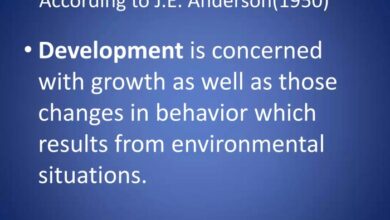
How to have one on ones – How to have one-on-ones is crucial for effective communication and achieving goals. This comprehensive guide dives deep into the intricacies of planning, leading, and succeeding in these essential meetings. From defining different types of one-on-ones to mastering the art of active listening, we’ll equip you with the knowledge and strategies to make every one-on-one a productive and rewarding experience.
This guide covers everything from scheduling to managing conflict, ensuring you are well-prepared for any scenario.
Understanding the different types of one-on-ones, such as performance reviews, check-ins, and mentoring, is key to tailoring your approach. We’ll explore the purpose, frequency, and duration of each type, offering clear examples and a comparison table to help you differentiate them.
Defining One-on-Ones
One-on-one meetings are a cornerstone of effective communication and collaboration in any professional setting. They provide a dedicated space for managers and employees to connect, discuss progress, address concerns, and foster a stronger working relationship. These meetings are crucial for both individual and team success, offering a structured environment for open dialogue and problem-solving.These meetings are not simply check-ins; they are opportunities for growth, feedback, and goal alignment.
They are a valuable investment of time that, when properly executed, yields significant returns in terms of productivity, engagement, and overall team performance.
Purpose and Benefits of One-on-Ones
One-on-one meetings serve several crucial purposes, all contributing to a more productive and fulfilling work environment. They foster a sense of trust and psychological safety, enabling open communication between team members and managers. This trust is essential for employees to feel comfortable sharing challenges, seeking guidance, and receiving constructive feedback. Regular one-on-ones also promote proactive problem-solving. Early identification and discussion of potential issues prevent them from escalating and impacting team performance.
Furthermore, they contribute to the development of stronger working relationships, creating a supportive and collaborative atmosphere. The focused attention of these meetings allows for a deeper understanding of individual needs and career aspirations, ultimately contributing to employee satisfaction and retention.
Types of One-on-One Meetings
Various types of one-on-one meetings cater to different needs and objectives. These meetings are designed to address specific goals and provide a structured framework for discussion and action planning. Understanding the different types allows for more effective scheduling and preparation.
Comparison of One-on-One Meeting Types
| Type | Purpose | Frequency | Duration |
|---|---|---|---|
| Performance Reviews | Formal evaluation of past performance, setting future goals, and providing feedback. | Annually or semi-annually | 60-90 minutes or more, depending on complexity |
| Check-ins | Regular progress updates, identifying roadblocks, and providing support. | Weekly or bi-weekly | 15-30 minutes |
| Mentoring Sessions | Providing guidance and support to a mentee, sharing knowledge and experiences. | Weekly, bi-weekly, or as needed | 30-60 minutes |
| Problem-Solving Sessions | Addressing specific issues or challenges faced by the employee or team. | As needed | Variable, depending on the issue’s complexity |
Planning Effective One-on-Ones

One-on-one meetings are crucial for fostering strong working relationships and driving individual and team performance. Proper planning ensures these meetings are productive and valuable for both the manager and the employee. A well-structured approach translates to more focused discussions, better problem-solving, and ultimately, a more efficient workflow.Effective one-on-one meetings are not simply check-in sessions; they are opportunities for open communication, goal setting, and collaborative problem-solving.
This section will provide a structured approach to scheduling, planning, and executing impactful one-on-one meetings.
Scheduling One-on-One Meetings
Consistent scheduling is key to establishing a rhythm for open communication and addressing critical needs. A regular cadence, whether weekly or bi-weekly, creates predictability and ensures consistent progress tracking. Consider the following approach:
- Establish a recurring meeting time on the calendar. This could be every Monday at 10:00 AM or every Wednesday at 2:00 PM.
- Communicate the scheduled time to all parties involved well in advance to allow for proper preparation.
- If a meeting needs to be rescheduled, do so promptly and clearly communicate the new date and time.
- Use a shared calendar system for easy visibility and conflict resolution.
- Be flexible and adaptable to changing circumstances. Sometimes, unforeseen events necessitate adjustments.
Topics for Discussion
A well-defined agenda ensures that the one-on-one meeting is productive and covers all necessary points. Having a pre-determined list of topics will help streamline the discussion and ensure nothing is missed.
- Progress on Goals: Review progress toward previously established goals. Discuss any roadblocks or challenges encountered. Adjust goals as needed based on performance.
- Project Updates: Discuss project milestones, upcoming deadlines, and any potential issues that may arise. Ensure that everyone is on the same page regarding progress.
- Feedback and Recognition: Provide constructive feedback on performance and offer recognition for accomplishments. Encourage the employee to share their thoughts and ideas for improvement.
- Development and Learning: Explore opportunities for professional development and skill enhancement. This may involve training, mentorship, or other learning experiences.
- Work-Life Balance: Address any concerns regarding work-life balance and offer support if needed. Understand and address potential stressors that may affect performance.
Example Meeting Agendas
These agendas are templates, adaptable to specific needs.
| Agenda Item | Description |
|---|---|
| Review Project Status | Discuss progress on current projects, identify any obstacles, and establish solutions |
| Feedback and Goals | Provide constructive feedback on performance, set short-term goals, and discuss potential roadblocks |
| Team Collaboration | Discuss any team-related issues or opportunities for improved collaboration |
| Next Steps | Artikel the actions required for the next period, including deadlines and responsibilities |
Setting Clear Goals and Expectations
Clearly defined goals and expectations are essential for effective one-on-one meetings. Start by outlining specific, measurable, achievable, relevant, and time-bound (SMART) objectives.
- Define Specific Outcomes: Clearly articulate the desired results of the meeting. What are you hoping to accomplish?
- Establish Actionable Items: Identify concrete steps or tasks that need to be completed. Document these and assign responsibilities.
- Communicate Expectations: Ensure that both parties understand their respective roles and responsibilities in achieving the desired outcomes.
Creating a Structured Meeting Agenda
A structured agenda ensures that the meeting stays on track and covers all necessary points. Prepare an agenda ahead of time, outlining the topics to be discussed and allocating specific time for each.
- Pre-Meeting Preparation: Collect relevant data and information before the meeting to make the discussion more productive.
- Time Allocation: Allocate specific time slots for each agenda item. This helps keep the meeting focused and on schedule.
- Action Items and Follow-up: Document any action items that result from the meeting, including deadlines and responsible parties.
Common Pitfalls to Avoid
Be mindful of these common pitfalls to ensure productive meetings.
- Dominating the Conversation: Encourage active listening and equal participation from both parties.
- Focusing on Complaints Instead of Solutions: Frame issues as opportunities for improvement and collaborative problem-solving.
- Skipping Crucial Topics: Ensure that all relevant topics are addressed during the meeting.
- Lack of Preparation: Adequate preparation before the meeting is crucial for its success.
Making One-on-One Meetings Engaging
Make the one-on-one meeting more than just a routine discussion.
- Encourage Open Communication: Create a safe and comfortable space for open dialogue.
- Actively Listen: Pay close attention to what the other person is saying and ask clarifying questions.
- Use Visual Aids: Graphs, charts, or other visual aids can help illustrate key points and improve engagement.
- Incorporate Feedback Mechanisms: Use feedback forms or questionnaires to gauge the effectiveness of the meeting.
Leading the Conversation
One-on-one meetings are crucial for fostering strong relationships and achieving professional goals. Effective communication during these meetings is key to extracting maximum value. Leading the conversation involves more than just asking questions; it requires active listening, understanding different perspectives, and navigating potentially challenging situations. This section dives into strategies for successfully leading these vital interactions.
Effective Questioning Techniques
Asking insightful questions is essential for a productive one-on-one. Instead of generic inquiries, focus on open-ended questions that encourage detailed responses and thoughtful reflection. This allows for a deeper understanding of the individual’s perspective and goals. Examples of effective questions include: “What are your biggest challenges right now?” or “What are your priorities for the next quarter, and how can we support you in achieving them?” or “What are you most proud of accomplishing recently?”.
Active Listening and Responding to Feedback
Active listening is a cornerstone of effective communication. It involves paying close attention not only to the words but also to the tone, body language, and underlying emotions. When someone shares feedback, acknowledge their contribution by summarizing their points and reflecting on their concerns. For example, “I hear you saying that the project timeline is too tight.
Effective one-on-ones require clear communication and a focus on the other person’s needs. Sometimes, though, navigating complex technical issues can be tricky, like figuring out how to access your router settings. Learning how to find your way around a router, for example, might help with troubleshooting network issues that could impact those crucial one-on-one interactions. Ultimately, mastering one-on-ones involves a blend of interpersonal skills and technical savvy.
finding your way around a router can be a helpful skill, and it all comes back to effective communication during those important one-on-one meetings.
Can you elaborate on what specific aspects are causing you concern?” This demonstrates understanding and encourages further clarification.
Managing Difficult Conversations
Difficult conversations are inevitable in any professional setting. The key is to approach these interactions with empathy and a focus on understanding the other person’s perspective. Maintain a calm and respectful tone, actively listen to their concerns, and validate their feelings. For instance, “I understand that you feel frustrated with the recent changes. Let’s discuss this further and explore solutions that work for both of us.”
Addressing Conflict Constructively
Conflict can arise in any workplace. When faced with conflict during a one-on-one, it’s important to remain objective and focus on finding common ground. Instead of taking sides, focus on understanding the underlying reasons for the disagreement. “It seems we have different interpretations of the project scope. Can we clarify the expectations for each party involved?” By approaching the situation with a collaborative spirit, you can find mutually beneficial solutions.
Encouraging Open Communication
Creating a safe space for open communication is essential. Use phrases like “I value your feedback,” or “I’m open to hearing your concerns,” or “Let’s explore the different perspectives.” These phrases demonstrate your willingness to listen and create an environment where open communication is encouraged.
Having effective one-on-ones requires a focused approach, active listening, and clear communication. But sometimes, the issues we face extend beyond the immediate conversation. For example, consider the implications of smart meters and security locking up the grid , a complex issue with far-reaching consequences. Ultimately, the key to successful one-on-ones is preparation, empathy, and a genuine desire to understand the other person’s perspective.
We need to be present and engaged to build strong relationships.
Giving and Receiving Constructive Feedback
Constructive feedback should be specific, actionable, and focused on improvement. When providing feedback, frame it in a positive and supportive manner. Use “I” statements to express your observations and suggestions. For example, “I noticed that in the last report, the data visualization was unclear. Could we explore using a different chart type next time to make the data more easily understood?” When receiving feedback, listen attentively and consider the suggestions offered.
Ask clarifying questions to ensure you understand the feedback accurately.
Active Listening Techniques
Active listening involves more than just hearing; it requires engaging with the speaker and demonstrating understanding. This involves maintaining eye contact, paraphrasing what the speaker has said, and asking clarifying questions. By actively listening, you demonstrate respect and create an environment where both parties feel heard and valued.
Preparing for the Meeting

Effective one-on-one meetings require meticulous preparation. Simply scheduling a meeting isn’t enough; proactive preparation significantly enhances the value and impact of these interactions. This focused approach ensures a productive conversation and actionable outcomes.Preparing for a one-on-one meeting is crucial for a successful interaction. A well-prepared meeting ensures that time is used efficiently, and discussions are focused on achieving desired outcomes.
It allows for proactive problem-solving, fosters a collaborative environment, and ultimately drives positive results.
Importance of Pre-Meeting Preparation
Thorough preparation demonstrates respect for the other person’s time and contributes to a more productive and focused conversation. It allows for a smoother flow of discussion, enabling a deeper understanding of the issues at hand and facilitates the development of practical solutions.
Checklist for a Successful One-on-One
A well-structured checklist ensures all critical aspects are covered before the meeting. This systematic approach helps avoid overlooking important points and guarantees a more productive interaction.
- Review past meeting notes: Understanding previous discussions and decisions is essential for building upon past progress and addressing any outstanding issues.
- Identify key discussion points: Focusing the meeting on specific topics ensures a targeted conversation and avoids tangents.
- Gather necessary documents and information: Having the relevant materials readily available prevents delays and allows for a more comprehensive discussion.
- Prepare questions for the discussion: Thoughtful questions encourage a more meaningful exchange and help elicit valuable insights.
- Artikel desired outcomes: Defining specific goals for the meeting ensures that the conversation remains focused and productive.
- Consider potential challenges and solutions: Anticipating potential roadblocks allows for proactive problem-solving during the meeting.
- Confirm meeting logistics: Ensuring the meeting location, time, and necessary technology are available is crucial for a smooth interaction.
Examples of Pre-Meeting Preparation Activities
Various activities can enhance pre-meeting preparation. These activities contribute to a smoother and more productive conversation.
- Reviewing project timelines and milestones helps to identify any potential delays or roadblocks. This proactive approach allows for prompt identification and resolution of issues.
- Analyzing team performance metrics provides a clear understanding of strengths and weaknesses, enabling targeted discussions and support.
- Identifying and addressing potential conflicts or concerns in advance helps to mitigate issues and fosters a more collaborative environment.
Key Documents and Information to Gather
Gathering essential documents before the meeting streamlines the process and ensures a more focused conversation. This proactive approach prevents unnecessary delays and ensures that critical information is readily available.
- Project reports: Providing a clear overview of project progress.
- Performance evaluations: Highlighting individual or team achievements.
- Relevant data and statistics: Offering concrete evidence for decision-making.
Reviewing Past Meeting Notes
Thorough review of past meeting notes is crucial for continuity and progress. This proactive approach ensures that discussions are built upon previous insights and avoids unnecessary repetition. This also ensures that previous agreements and action items are addressed.
Note-Taking Template
A structured template for note-taking during one-on-ones helps organize information and ensures clarity. This organized approach aids in remembering key discussion points and facilitating follow-up actions.
| Date | Time | Attendees | Discussion Points | Action Items | Next Steps |
|---|---|---|---|---|---|
| [Date] | [Time] | [Attendees] | [Discussion Points] | [Action Items] | [Next Steps] |
Importance of Follow-Up After the Meeting
Follow-up after the one-on-one meeting is vital for ensuring action and accountability. This proactive approach reinforces the importance of the meeting and fosters a sense of shared responsibility. This approach solidifies the discussion and ensures that the desired outcomes are achieved.
Different Roles and Situations
One-on-ones are crucial for effective communication and relationship building, but their approach needs to adapt to the specific roles and situations involved. Understanding the dynamics between managers and employees, team settings versus individual interactions, and even handling challenging team members significantly impacts the success of these meetings. This section delves into tailoring one-on-one strategies to various contexts for optimal outcomes.Different roles and team structures require different approaches to one-on-one meetings.
Effective one-on-ones are not a one-size-fits-all solution; they must be tailored to the specific circumstances.
Manager-Employee One-on-Ones
Managers should focus on employee development, feedback, and goal alignment in their one-on-ones. These meetings are opportunities to discuss performance, address concerns, and provide constructive criticism. Active listening and clear communication are paramount. Managers should also establish a comfortable and open environment to encourage candid discussion. Open-ended questions are crucial to encourage employees to share their thoughts and ideas.
Employee-Employee One-on-Ones
For employees in a team setting, one-on-ones can be invaluable for collaboration and support. These meetings are opportunities to share updates, ask questions, and brainstorm solutions. They foster a stronger sense of teamwork and shared responsibility. Employees should prioritize mutual respect and understanding in these interactions. One-on-one time can also be used to share ideas, brainstorm, and problem-solve as a team.
One-on-Ones in Team Settings
Team one-on-ones differ from individual meetings. Team settings often involve more participants and require a more structured approach to ensure everyone gets a chance to share their perspectives. Effective facilitation and clear agendas are essential to keep the discussion focused and productive. Team members should be encouraged to actively participate and contribute ideas to improve the team’s efficiency.
Handling Difficult Team Members
Difficult team members can sometimes make one-on-ones challenging. Addressing these situations requires a calm and professional demeanor. The focus should be on understanding the underlying issues and finding solutions that benefit everyone. Active listening and empathy are crucial. Documenting key points of discussion and agreed-upon actions is also essential.
For example, if a team member is consistently late, a one-on-one could address the impact on the team and explore solutions like adjusting work schedules or offering support systems.
Remote Team One-on-Ones, How to have one on ones
Remote teams require a different approach to one-on-ones, as the lack of physical presence can make it more difficult to build rapport and understand nonverbal cues. Using video conferencing tools is crucial. It’s vital to establish clear agendas and keep the meetings focused. One-on-one meetings for remote teams need to prioritize clear communication and address potential technological challenges.
For example, scheduled time blocks for non-work-related discussions can be valuable for remote teams, helping foster camaraderie and understanding.
Nailing one-on-ones is key for effective management. A great place to start is by creating a structured agenda, focusing on both performance and development. To help new managers, consider checking out the new manager gift guide for some helpful tips and resources. Ultimately, remember that consistent, open communication is crucial for successful one-on-ones.
Comparison of One-on-One Strategies
| Situation | Key Considerations | Strategies |
|---|---|---|
| Manager-Employee | Performance, feedback, development | Establish clear goals, provide constructive feedback, active listening |
| Employee-Employee | Collaboration, support, information sharing | Open communication, brainstorming, shared problem-solving |
| Team Setting | Inclusivity, equal participation | Structured agenda, clear roles, active listening from all members |
| Difficult Team Member | Understanding underlying issues, finding solutions | Empathy, active listening, documenting actions |
| Remote Team | Overcoming lack of physical presence | Using video conferencing, clear agendas, addressing tech issues |
Tools and Resources: How To Have One On Ones
Boosting your one-on-one effectiveness requires the right tools and resources. From streamlining scheduling to capturing valuable insights, the right digital companions can significantly improve the experience for both you and your team members. This section explores practical tools and strategies to optimize your one-on-one interactions.Effective one-on-one conversations demand more than just a shared calendar. Tools and resources help structure the process, enhance communication, and ensure that the outcomes are actionable and valuable.
They enable efficient scheduling, facilitate remote meetings, and provide mechanisms for documenting key takeaways.
Scheduling and Management Tools
Effective scheduling is crucial for maximizing the impact of one-on-ones. Dedicated scheduling tools can save time and ensure that everyone is on the same page. These tools offer features like recurring appointments, automated reminders, and integrated communication channels. This streamlined approach prevents missed meetings and keeps everyone informed.
- Calendar Applications: Google Calendar, Outlook Calendar, and other calendar applications provide basic scheduling functionalities. Features like shared calendars and automated reminders are essential for keeping everyone informed and on track. They enable seamless scheduling and collaboration.
- Dedicated Scheduling Platforms: Tools like Calendly, Acuity Scheduling, and Doodle Polls simplify scheduling and streamline the process for both the manager and the employee. They automate the process of scheduling one-on-ones, minimizing back-and-forth communication and increasing efficiency.
Remote Meeting Platforms
For remote teams, robust video conferencing tools are essential for effective one-on-ones. These platforms provide a virtual meeting space, facilitating clear communication and collaborative discussions.
- Video Conferencing Platforms: Zoom, Microsoft Teams, Google Meet, and similar platforms are vital for remote one-on-ones. These platforms offer features like screen sharing, breakout rooms, and recording capabilities, enriching the remote interaction experience.
- Collaboration Tools: Tools like Slack, Microsoft Teams, and Google Chat allow for pre-meeting discussions, sharing documents, and follow-up communication. These platforms can be used to share relevant materials or questions beforehand, ensuring the meeting is productive and focused.
Resources for Further Learning
Continuous learning is essential for refining one-on-one skills. Numerous resources offer insights and strategies to enhance your practice. Books, articles, and online courses provide diverse perspectives on the subject.
- Online Courses: Platforms like Coursera, LinkedIn Learning, and Udemy offer various courses on communication, leadership, and management, which can greatly enhance one’s ability to conduct effective one-on-ones.
- Books and Articles: Numerous books and articles focus on leadership, communication, and performance management. These resources provide valuable insights into effective one-on-one interactions, including best practices and common pitfalls to avoid.
- Industry Blogs and Publications: Stay updated with industry trends and best practices by following blogs and publications focused on management, leadership, and team development. These resources provide valuable insights into current approaches and emerging strategies for managing one-on-ones effectively.
Documenting Meeting Outcomes
Effective documentation ensures that the key takeaways from one-on-ones are not lost. Structured approaches to documenting outcomes can improve follow-up and accountability.
- Action Items: Clearly defining action items and assigning responsibilities for each one ensures that tasks are tracked and completed. Using a template or a dedicated tool to record action items and deadlines keeps the process organized and effective.
- Meeting Minutes: Brief, concise meeting minutes capture key decisions, discussions, and action items. These records provide a clear summary of the meeting and can be used for future reference and accountability.
- Follow-up Emails: Sending follow-up emails summarizes key takeaways and action items from the one-on-one, reiterating commitments and deadlines. This reinforces the conversation and promotes accountability.
Measuring Success
One-on-ones are valuable tools for professional growth, but their effectiveness isn’t self-evident. To truly reap the benefits, you need a structured approach to measuring success. This involves identifying key performance indicators (KPIs) and tracking progress towards goals set during each meeting. Understanding what constitutes a successful one-on-one is critical for continuous improvement and ensuring the meetings serve their intended purpose.Evaluating the effectiveness of one-on-ones requires a proactive and consistent approach.
It’s not enough to simply hope for positive outcomes; a systematic process of tracking and analysis is essential for optimizing these interactions. This involves understanding the specific objectives for each meeting and how to measure if they are being met.
Metrics for Evaluating Effectiveness
Understanding the metrics used to evaluate one-on-one effectiveness is crucial. This ensures that you’re not just having meetings, but actively driving progress and development. Different metrics will be relevant based on the specific goals of the one-on-one.
- Action Items Completion: Tracking the completion of action items from previous one-on-ones provides a clear measure of follow-through and accountability. This metric ensures that the discussion doesn’t just remain theoretical, but translates into concrete action. For example, if a team member agreed to complete a project by a certain date, checking off that item as complete is a straightforward way to measure progress.
- Skill Development Progress: Tracking progress in acquiring new skills or refining existing ones, based on the identified needs and goals. This can be measured through self-assessments, performance reviews, or feedback from colleagues. For instance, if a goal is to improve communication skills, specific examples of improved communication, such as clear and concise emails or successful presentations, can be documented.
- Goal Attainment: Measuring the progress toward personal or professional goals. This might include milestones reached, obstacles overcome, or adjustments made to strategies. For instance, if a goal is to secure a promotion, tracking the steps taken toward that goal, such as attending relevant workshops or networking events, is important.
- Improved Communication: Evaluate the clarity and frequency of communication. This can include checking if the team member is responding promptly to emails, proactively sharing updates, or actively participating in team discussions. For example, if there’s a need to improve the flow of information, observe if communication channels are being used efficiently.
Tracking Progress Based on Goals
Tracking progress based on one-on-one goals requires a structured approach. It ensures that the discussions are not just superficial but lead to concrete improvements. Maintaining a system for recording goals and tracking progress is essential for effective management.
- Establish Clear Goals: Clearly define the goals for each one-on-one. This involves specifying what needs to be accomplished and the desired outcome. For example, a goal might be to develop a specific skill, learn a new tool, or improve a specific aspect of work performance.
- Set Actionable Steps: Break down the goals into smaller, actionable steps. This allows for tracking progress more effectively and provides a roadmap for achieving the desired outcomes. For example, instead of just aiming for improved presentation skills, Artikel specific steps, like practicing a presentation three times, receiving feedback from colleagues, and adjusting the content based on the feedback.
- Regular Check-ins: Schedule regular check-ins to monitor progress. These meetings should be used to review the steps taken, discuss any challenges encountered, and adjust strategies as needed. This allows for ongoing adjustments to the plan based on real-time observations.
Key Indicators of Successful One-on-One Meetings
Identifying key indicators of successful one-on-one meetings helps to assess the effectiveness of the process and identify areas for improvement. The key is to ensure that both parties are feeling heard and understood.
- Positive and Productive Atmosphere: A positive and productive atmosphere is essential for meaningful conversations. This includes active listening, respect, and a willingness to engage in constructive dialogue. This is noticeable in the tone of the conversation, the willingness to share concerns, and the overall energy of the meeting.
- Clear Action Items: Establish clear and actionable steps to take away from the meeting. These should be documented and agreed upon by both parties to ensure accountability and follow-up. This shows that the meeting has a clear outcome.
- Mutual Understanding and Agreement: Ensure that both parties understand and agree on the discussed points. This shows that the meeting has led to a shared understanding and direction. This includes a sense of agreement on the next steps and a clear path forward.
Methods for Collecting Feedback
Collecting feedback on the one-on-one process is crucial for improvement. Understanding how well the meetings are serving their purpose is essential for continuous growth and effectiveness.
- Post-Meeting Check-ins: Conduct brief post-meeting check-ins with the team member to gather feedback on the meeting’s effectiveness. Ask specific questions about the value they derived from the discussion and how the meeting helped them.
- Formal Feedback Forms: Use standardized feedback forms to gather comprehensive feedback on the process. These forms should include open-ended questions to encourage detailed responses. These forms can be used to gather both positive and negative feedback to identify areas of strength and areas for improvement.
- Anonymous Surveys: Conduct anonymous surveys to encourage honest feedback. This approach can help to gather feedback without the fear of reprisal. This can identify any underlying issues or areas for improvement in the overall process.
Last Point
In conclusion, mastering one-on-one meetings involves careful planning, active listening, and a thoughtful approach to various situations. Whether you’re a manager or an employee, a team leader or a remote worker, the principles Artikeld in this guide will help you navigate these interactions with confidence and effectiveness. By preparing meticulously, engaging in active listening, and understanding the specific nuances of different roles and situations, you can leverage one-on-ones to drive productivity, foster strong relationships, and achieve shared goals.






